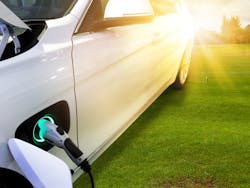Heads Up Microgrid Developers. EVs will Create $30-50B Need for Generation and Storage
A new report by The Brattle Group finds that electric vehicles (EVs) could spur the need for a $30-50 billion investment in generation and energy storage — a figure likely to catch the attention of microgrid developers.
The microgrid industry sees electric vehicles creating new markets for microgrids, particularly when located in areas that the central grid can’t easily serve.
The report posits that the number of electric vehicles in the US will grow from 1.5 million in 2020 to 10–35 million by 2030.
When the US reaches about 20 million vehicles, demand for electricity will grow by about 60–95 TWh annually, adding 10–20 GW of peak load and requiring 12–18 GW of renewable generation capacity and over 1 million public chargers, says the report: “Getting to 20 Million EVs by 2030: Opportunities for the Electricity Industry in Preparing for an EV Future.”
In all, 20 million electric vehicles will require a $75-125 billion investment by the electric sector, says the report. In addition to creating a new market for generation and storage, the electric vehicles will demand a $15–25 billion investment in transmission and distribution upgrades, and $30–50 billion for EV chargers and customer-side infrastructure.
Society will be paid back fairly quick for the investment, according to the report. Electric vehicles will cut gasoline costs for consumers by $12 billion/year, creating an 8.6-year payback. Add to that a $50/ton value from avoided greenhouse gas emissions, and the payback occurs in 7.2 years.
The report also looks at the value of energy storage offered by batteries within the 20 million electric vehicles. The vehicles will offer the grid up to 1,600 GWh of electricity storage capacity, enough to provide 300 GW that could be used to help integrate and balance renewables.
“While EVs and chargers are becoming more common in our everyday lives, the industry is really just seeing the tip of the iceberg when it comes to the impact that EVs will have on the grid,” said Michael Hagerty, a Brattle Senior Associate and study coauthor. “System planners across the electricity supply chain need to better understand and prepare for the impacts of EVs, including the opportunities for EV participation in balancing the system.”
Microgrids also are being used to balance renewable intermittency on the grid, and electric vehicles are increasingly being planned within microgrids as an additional resource to help provide grid resources and for internal management of microgrid supply and demand.
Read more about microgrids and electric vehicles here on Microgrid Knowledge.







